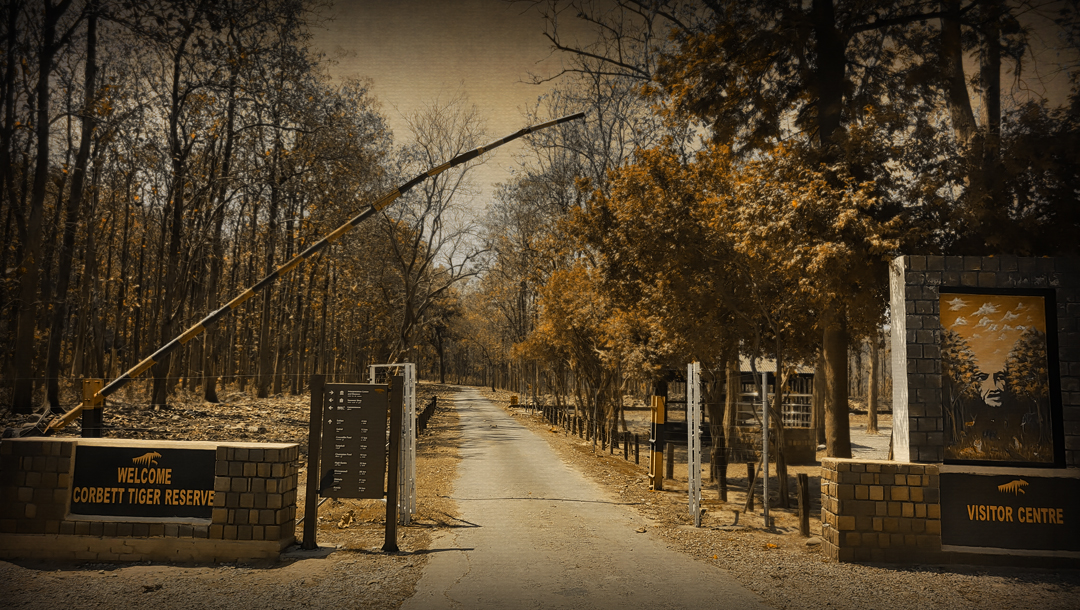Jim Corbett History
Where It All Began
Once upon a time, there was a Jungle in the foothills of the Himalayas that was full of wild animals. The jungle was filled with thick trees, and there were wild animals and birds. The jungle looked beautiful because it had flowering plants, flowing rivers, and huge grasslands, but it was not known among people because of its beauty. The Jungle was known for its dangerous man-eating tigers and leopards. The villagers who used to live near the Jungle always spent their time scared because man-eating tigers and leopards often attacked them. Then, it became important to have a hero who could understand the jungle and save people from animals. That hero was Jim Corbett, who was a legend. He became known as a brave hunter who killed man-eating tigers and leopards that troubled villages. After many dangerous encounters and brave missions, Jim Corbett became the name everyone respected and trusted.
But Jim Corbett didn’t like killing animals, he did it only when it was the last option to save the lives of villagers. He took his time to understand the Jungle and then believed that the forest had been disturbed by people, and that’s why animals turned dangerous. After some time, he stopped hunting and spoke up about protecting forests, saving tigers, and respecting nature. Because of the Words of Jim Corbett, people started seeing forests in a different way. He explained that many of the man-eating tigers that he killed were either injured, old, or had broken teeth, which made it hard for them to hunt wild prey. This is why they hunted humans. His detailed explanation helped people to understand that animals are not naturally dangerous, they attack because of survival.
And then, something historic happened in 1936. This Jungle was officially declared a protected forest and became India’s first national park. It was named Hailey National Park in the beginning, and that was the first step towards saving wildlife in India. This was a huge moment, not just for the animals but for the country. Over the years, the name of this park changed as Ramganga National Park and then renamed Jim Corbett National Park, to honour the man who risked his life for the people and the wildlife. It became the first home for Project Tiger, and now, it’s a protected area where the flora and fauna are saved under expert supervision.
History - Photo :


The Man Who Loved Animals
Jim Corbett was a legend who was born in 1875 in a small town called Nainital. He grew up in areas that were surrounded by forests. When he was a child, he would go to the jungle and quietly watch animals from a distance. He loved knowing the language of the wild, and he was curious to know them. He listened to bird calls, followed footprints in the mud, and learned how to move through the forest without making a sound. Slowly, he became an expert at understanding the language of the wild. Because of his knowledge about the Jungle, he was chosen to kill animals because it was needed. His deep knowledge of animal behaviour made him the only person brave and skilled enough to track and stop the dangerous animals that were killing humans. So, he hunted animals, but not for fun.
After many hunts, he found that most of the tigers he killed were either injured, old, or had broken teeth, which made it hard for them to hunt wild prey. He took time to understand that all of these tigers came to villages for hunting because of problems, and they had no other option. Also, he understood that some of them came to villages because their natural homes were slowly disappearing. Because of that, tigers couldn’t find prey animals. Over the years, Jim Corbett stopped hunting and started focusing on protecting the Jungle. He wrote books like Man-Eaters of Kumaon to share his experiences. He wrote to share knowledge and teach people about the animals' behaviors. He believed that if people learned to respect the forest, they would stop fearing it. His love for nature and wildlife is the reason why people started to understand the animals and now are protecting them.
How the Forest Was Saved
Back in those days, people didn’t care about the forests. In early times, the animals were hunted for fun and games, and were a sport for the rich and powerful. Forests were cut to make space for roads, farms, and cities. The trees were cut without even thinking twice. But Jim Corbett believed that this had to change. He saw the forests slowly dying, and even after some hunts, he also understood the needs of animals. He and others who loved wildlife started raising their voice for the voiceless animals. He wanted a space where animals could live without fear, and humans could only go to those areas to observe or watch animals.
That’s how the Jungle in the foothills of the Himalayas became a protected area. In 1936, with the efforts of British officials and suggestions from Corbett, Hailey National Park was created, which was the first in India. It was a huge moment, not just for the animals but for the country. It was a bold step for a time when protecting animals was not even a priority. Corbett believed that if animals were not protected, then they would just become alive in stories. He wanted the generations to see tigers, leopards, and elephants in their natural habitat.
After the park was declared a protected area, the forest began to heal. Grasslands became greener, and prey animals like deer and wild boars multiplied, so the tigers got their food without problems. In 1973, this very park was even chosen for Project Tiger, and it was a proud and emotional moment. The dream of Jim Corbett turned into a national movement, and then a lot of other parks were made at different spots and times. Now, Jim Corbett National Park is one of the most successful tiger reserves in India.
This park was not only a protected area, but it was also a place where people could come and see animals from a respectful distance. The park gained popularity, and it started growing. New zones were added like Dhikala, Bijrani, Jhirna, and Durga Devi with their own floral charm and wildlife. A lot of scientists and researchers started to visit this area to study the ecosystem of this spot. Forest officers made sure that safaris didn’t harm the wildlife, and lodges, nature walks, and birding were planned in a way that would not disturb the natural setting.
And so, Jim Corbett’s dream came true, and this area became a place where wild animals were not chased, but respected. A place where the safety of animals was important than humans and they were not caged. Now, you can go to the park and see the amazing flora and fauna of this area.
Why This Story Still Matters
Jim Corbett passed away many years ago, but his story is still in everyone’s heart. He showed everyone that even one person can make a huge difference if they do things right and with a clear heart. This park, which is named after him, is not just a tourist spot. It’s a spot to honor him because he believed in nature, even when it was not a popular thing.
Eevrry tiger sighting, every picture that tourists take at this site, and the thrill of safaris are possible because of the efforts and courage of one person. His love for wild animals made it possible for him to provide them with a safe space. Many people still read his books, and they get inspired to love animals more. His connection with the animals still touches the hearts of the people who come to the park and get to know his story.
Whenever you visit the wild Jim Corbett National Park, don’t just see the animals but feel his story. Imagine how Jim crossed those safari roads, quietly observed animals, and understood the voiceless. You’ll feel a deep connection between the animals and humans if you go there with a heart full of love.